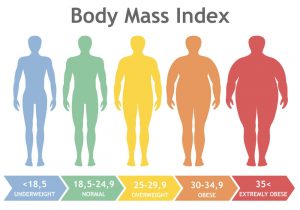What Is Obesity

The Obesity Epidemic
According to the Surgeon General’s recent “call to action,” obesity has reached nationwide epidemic proportions. Obesity is defined as an excess of total body fat, a result of imbalance between caloric intake and energy expenditure. In 1999, an estimated 61 percent of U.S. adults were overweight, along with 13 percent of children and adolescents. Obesity among adults has double since 1980, while the number of overweight adolescents has tripled. Increases in obesity are associated with dramatic increases in conditions such as type 2 diabetes and asthma. In addition, a recent study reported that obesity causes more deleterious effects on health than either smoking or problem drinking. The increase in chronic health conditions caused by obesity is similar to that seen in 20 years of aging.
Obesity can be a degenerative and debilitating disease. The National Institutes of Health reports that obesity substantially increases the risk of morbidity and mortality from:
- Heart disease
- Diabetes (type 2)
- Stroke
- High blood pressure
- Sleep apnea
- Cancer
- Breathing difficulties
- Joint problems
Among individuals who were diagnosed with type 2 diabetes, 46 percent were obese. Among those with high blood pressure, 38 percent of men and 32 percent of women were obese. According to the American Obesity Association, obese individuals have a 50 percent to 100 percent increase of death compared to individuals of normal weight, with obesity reportedly causing 300,000 to 587,000 deaths each year. This substantial increase in health risks has made obesity the second leading cause of preventable death in the United States.
Measuring Obesity
A measurement used to assess obesity health risks is Body Mass Index (BMI). BMI is calculated by dividing body weight in pounds (lb) by height in inches squared (in²) and multiplying that amount by 704.5. The metric calculation for BMI is kg/m². Although health risks increase at a BMI of 27, significant health problems and increased risk of death are greater as a person’s BMI increases. Obesity is defined as a BMI of at least 30, severe obesity is associated with a BMI of at least 35, and morbid obesity with a BMI of 40 or higher.
Economic Impact of Obesity
The economic impact of obesity in the United States is substantial, estimated at approximately 6 percent of our national health expenditure. As obesity continues to grow, so do healthcare costs. The American Obesity Association states that obesity-related costs exceed $200 billion per year in the United States alone.
Diet, exercise, and pharmaceuticals are the primary non-surgical treatments of obesity. Americans spend more than $33 billion annually on weight loss products and services. However, these programs have a failure rate of up to 95 percent at five years. Studies indicate that people who complete non-surgical weight loss programs and lose approximately 10 percent of their body weight gain one third of it back within one year and almost all of it back within five years*. There is little evidence to suggest that any non-surgical treatment will achieve significant, but more importantly, sustained weight loss in the severely obese.
*American Association of Clinical Endocrinologists (AACE/American College of Endocrinology (ACE) Obesity Task Force. Endocr Pract. 1998, 4:297-330.
